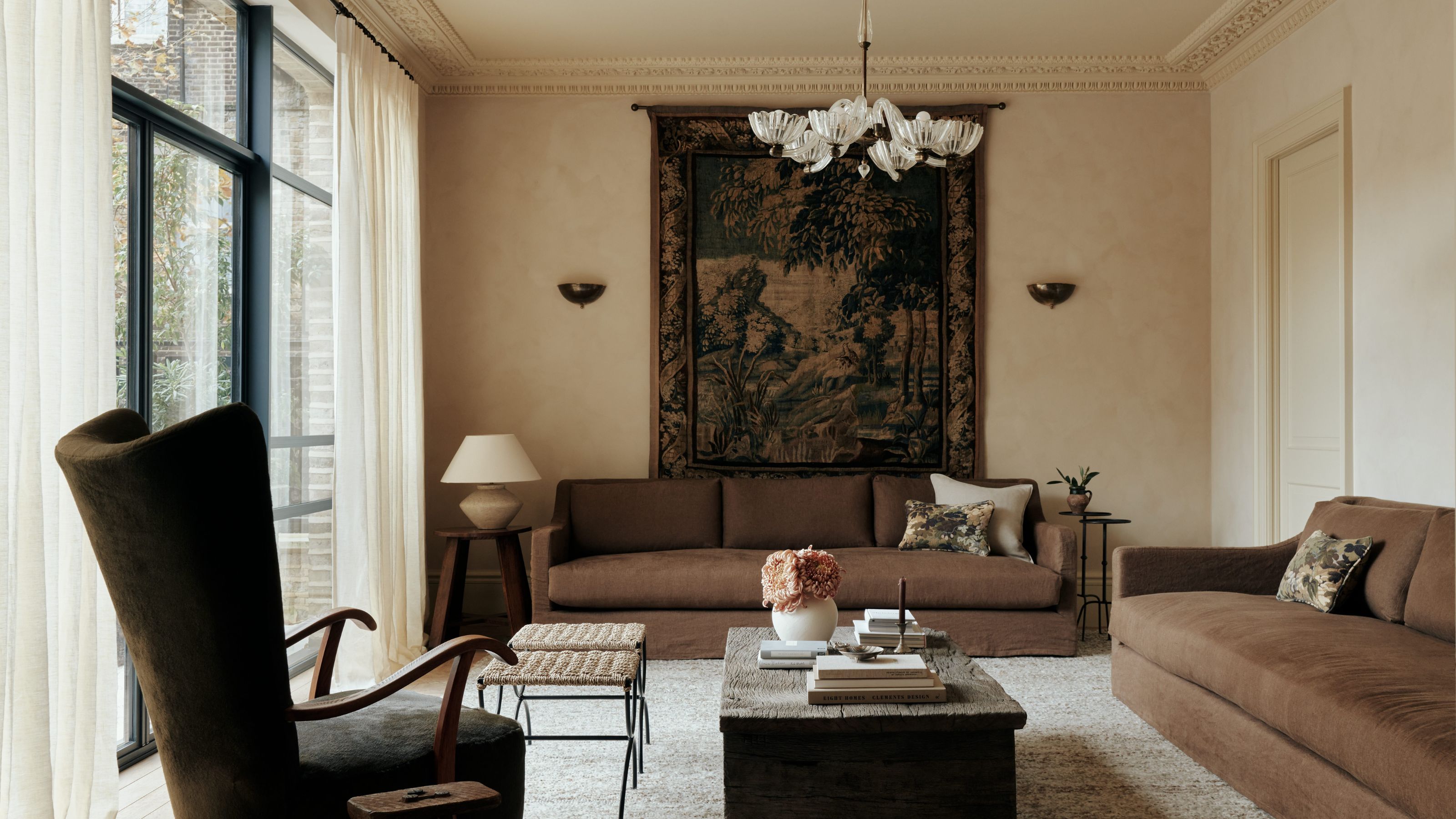
Things have changed — plasterwork is not just small, old-school, dust-covered detailing that disappears into the room anymore. Today's cornicing (the decorative moldings that run along the seam between walls and ceilings) and plasterwork (a broader term that includes features such as ceiling roses, wall paneling, and ornamental reliefs) come in all shapes and sizes, from the classical to the creative.
"Cornices and other plaster details have evolved far beyond their traditional, elaborate styles — there are now plenty of modern options for those who prefer a more streamlined aesthetic," says Greg Natale, director of his eponymous Sydney-based architectural and interior design firm, of the ceiling decorating idea.
"You can achieve a decorative effect without leaning too heavily into traditional styles, which can feel too ornate for contemporary homes," he adds. "Clean designs add refinement without overwhelming a space, allowing the plasterwork to enhance the interior rather than compete with it."
1. How Big Should Plasterwork Be in Relation to the Room?
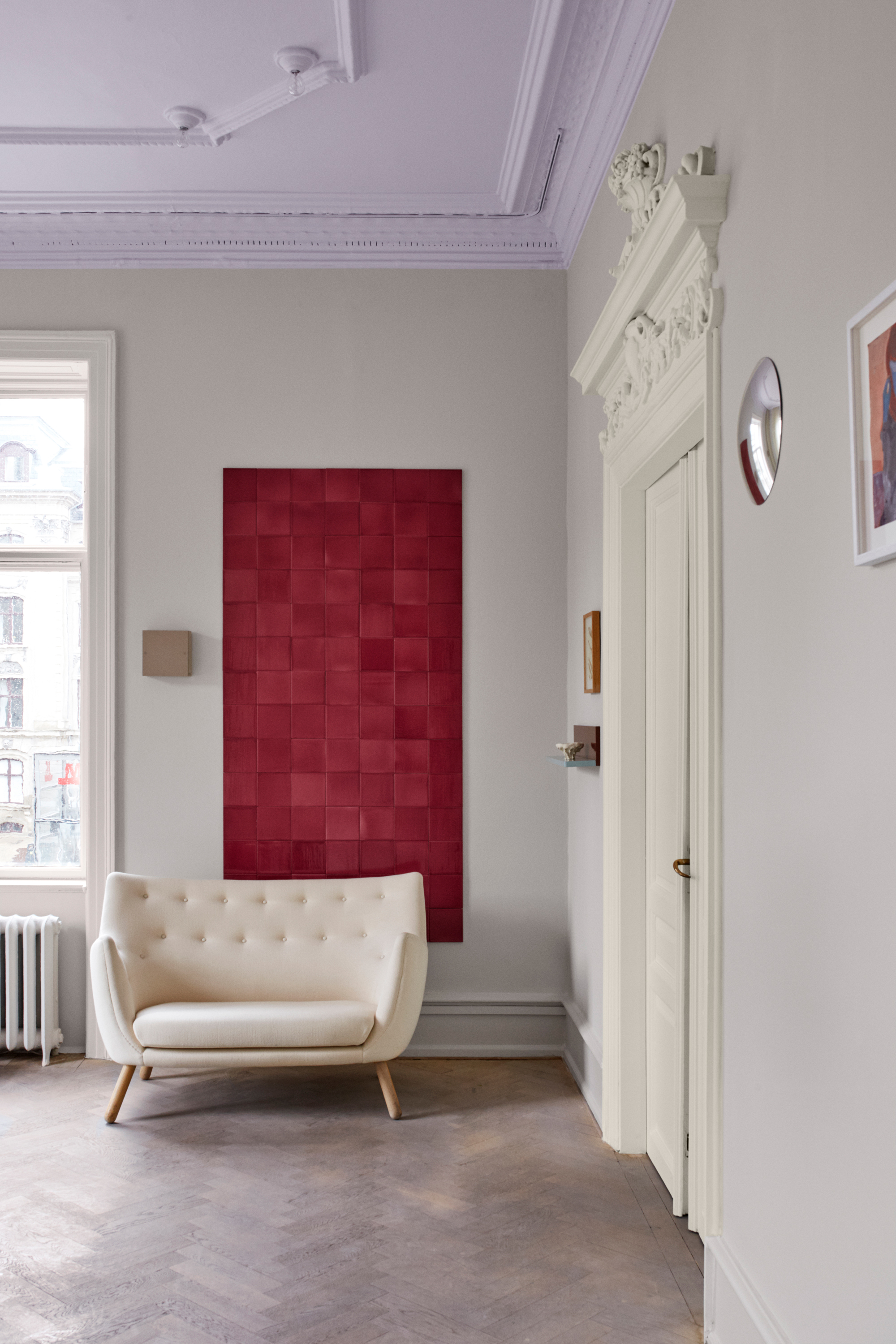
Historically, plasterwork, such as crown molding, would be at its most artistic and intricate on the lower floors of the house, getting smaller and simpler as you rise upwards, so if you’re stuck on where to start, this is still a good rule of thumb.
"Proportion is crucial when selecting plasterwork — oversized or undersized elements disrupt a room’s balance and can bring the perception of the ceiling down, making the room feel smaller," explains David Hartley, associate director of London-based architecture and interior design studio Own London.
"Cornice depth should match wall height — bold, deep designs suit high ceilings, while slender profiles work best in smaller rooms," he adds. "Ceiling roses must scale with the room and light fitting. Oversized roses can overwhelm small spaces, while delicate designs may be lost in larger rooms."
2. How Do I Pick the Right Decorative Plasterwork?
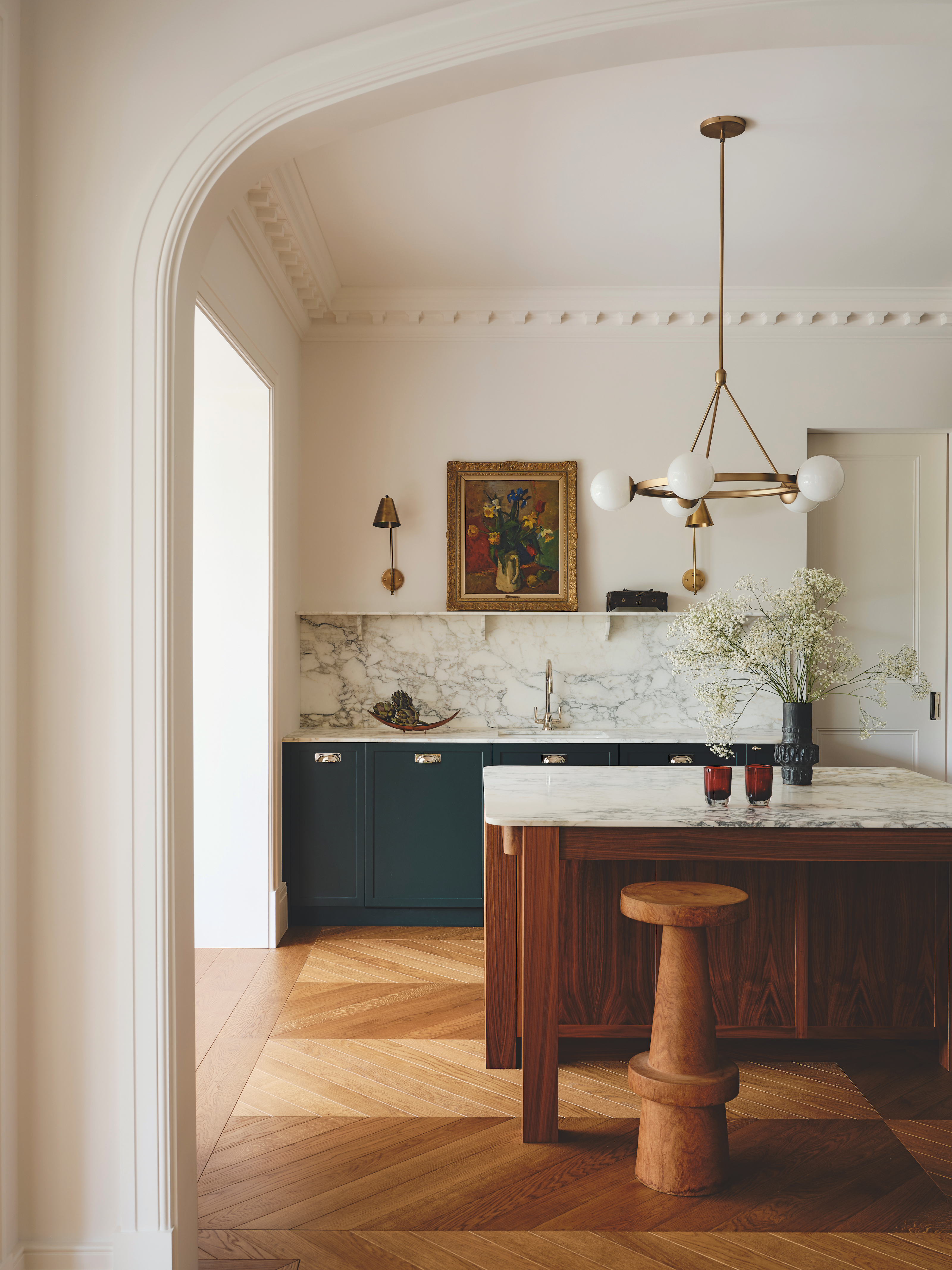
The scale in the interior design and the proportions of the room are of utmost importance where plasterwork is concerned — something David Hartley considered carefully in a West London Victorian-style home, where he made sure to respect the original architecture.
"The ceilings are very high, so we chose profiles that are expressive and bold to celebrate that height while at the same time not seeming small from the ground level," he says.
"The arch is a significant architectural feature and needed to be highlighted while not detracting from the view it frames, so it’s complemented by smooth fibrous plaster, which seamlessly integrates with the surrounding moldings, while the detailed cornice on the ceiling features a bespoke classical dentil molding by EJ Harmer & Co to add a sense of historical depth and craft."
3. Should I Repair or Replace My Existing Plasterwork?
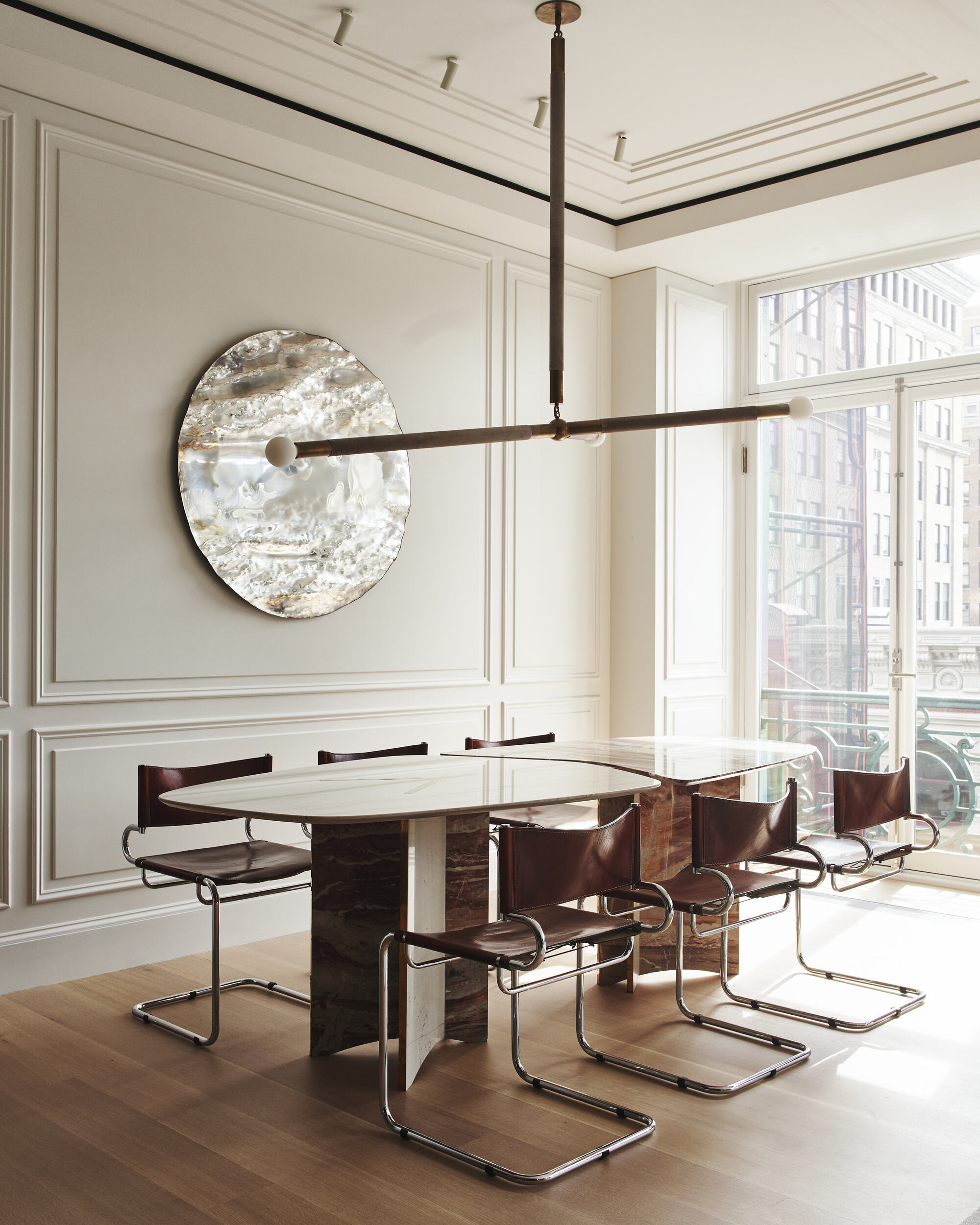
Living with a cornice that’s seen better days is heartbreaking and can often bring down the room no matter how finished the rest of it is. Restoring it can often seem like the only way forward, but fear not — there are ways around this often painstaking and expensive process.
"While restoring an original cornice is often a wonderful endeavor, it can be incredibly time-consuming and costly," says Pereen d’Avoine, founding director of East London architecture and interior design practice Russian For Fish.
"In some cases, replacement may be the more cost-effective solution, with molds taken to recast original cornices and ceiling roses," she adds. "Ideally, the pieces being cast should be free from layers of paint that might obscure their finer details."
4. What Color Should I Paint Decorative Plasterwork?
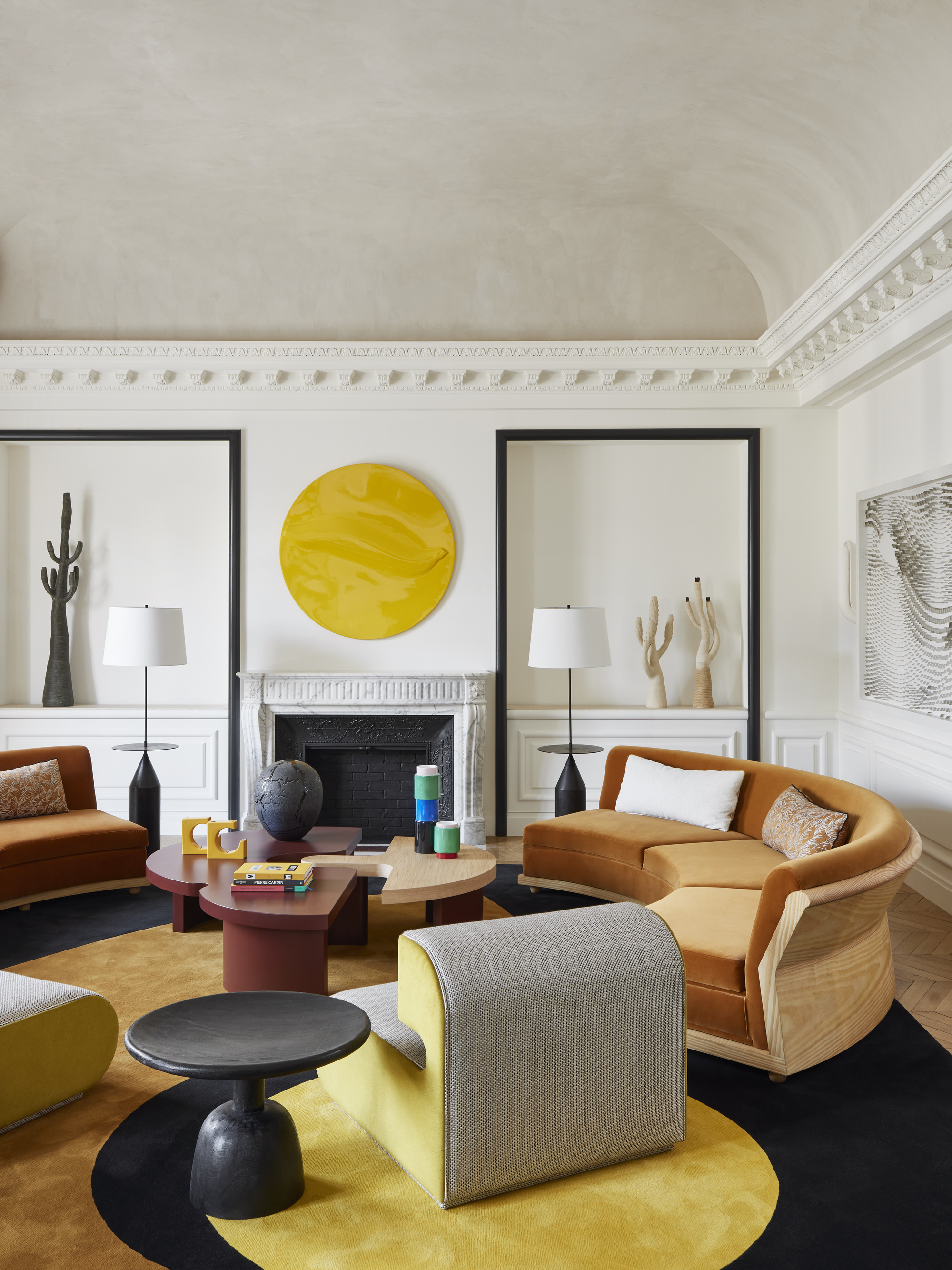
While yes, plaster is a kind of white-ish tone, its color palette in the home has transformed, and it’s now embraced in all sorts of hues.
"There are no rules when it comes to plaster: leaving it natural gives a soft, raw elegance, but subtle pigments or limewash paints can add warmth," explains Siobhan Kelly, associate director at London-based interior design and architecture firm David Collins Studio.
"Color completely transforms it, and painted plaster can be bold and dramatic," she adds. "Raw plaster is perhaps more suited to a kitchen or bathroom, whilst painted plaster would feel more at home in a formal living or dining space."
So go, experiment. But be warned — do not pick up a paintbrush until the plaster has fully cured.
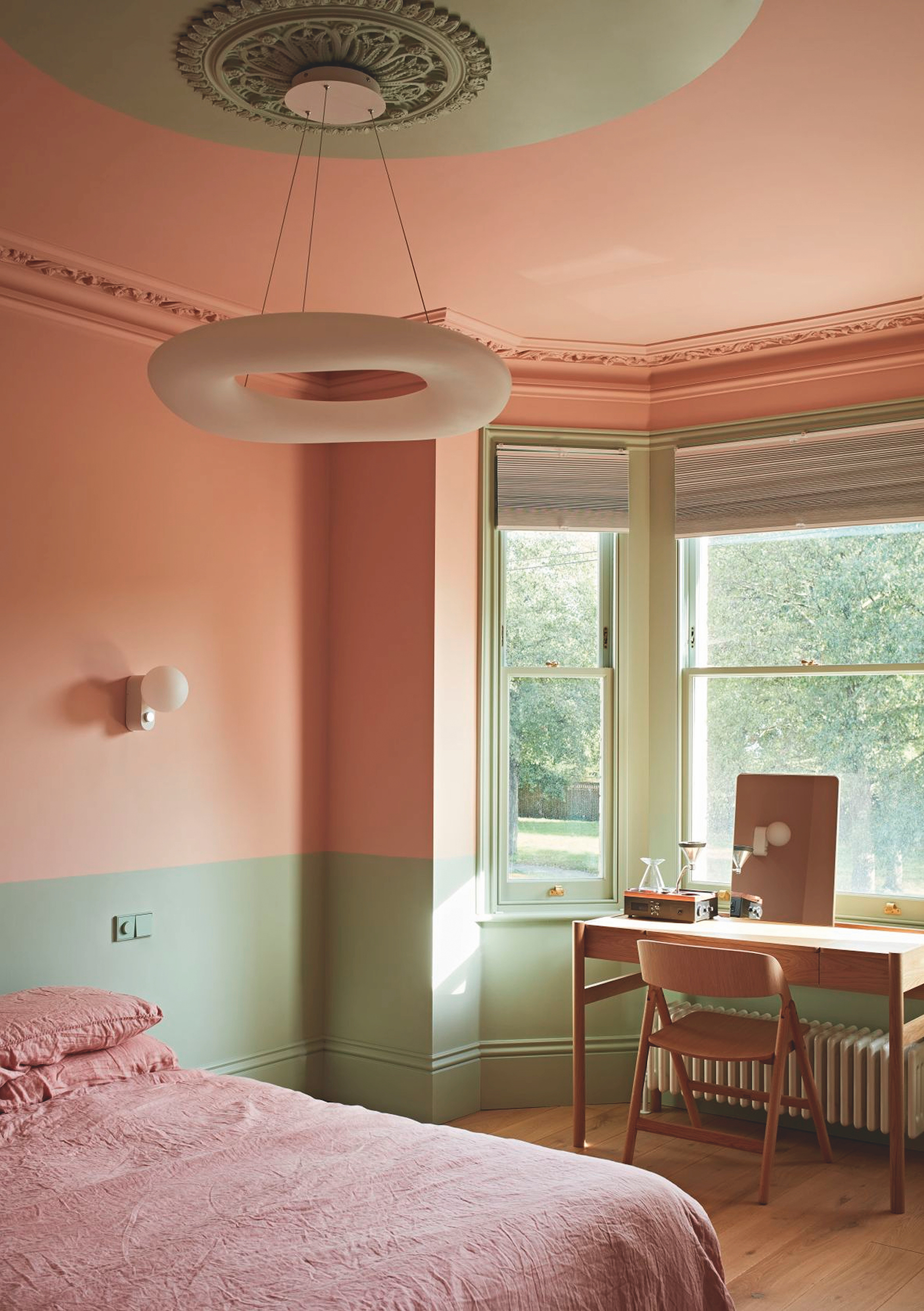
The days of ivory-toned ceiling plasterwork are over: we’re all about adding a progressive twist to even the most quintessential of architectural elements.
In a flat in a south London Victorian period conversion (shown above), intricate cornicing by Cornice London was brightened with peach paint and clever color blocking.
"We never shy away from painting plasterwork in vibrant hues," explains Pereen d’Avoine. "The soft contrast between the pastel-ish tones highlights the cornicing and ceiling rose, and the color separation pulls focus to features like the dado rails, skirting, and moldings."
5. How Can I Use Decorative Plasterwork in a Modern Home?
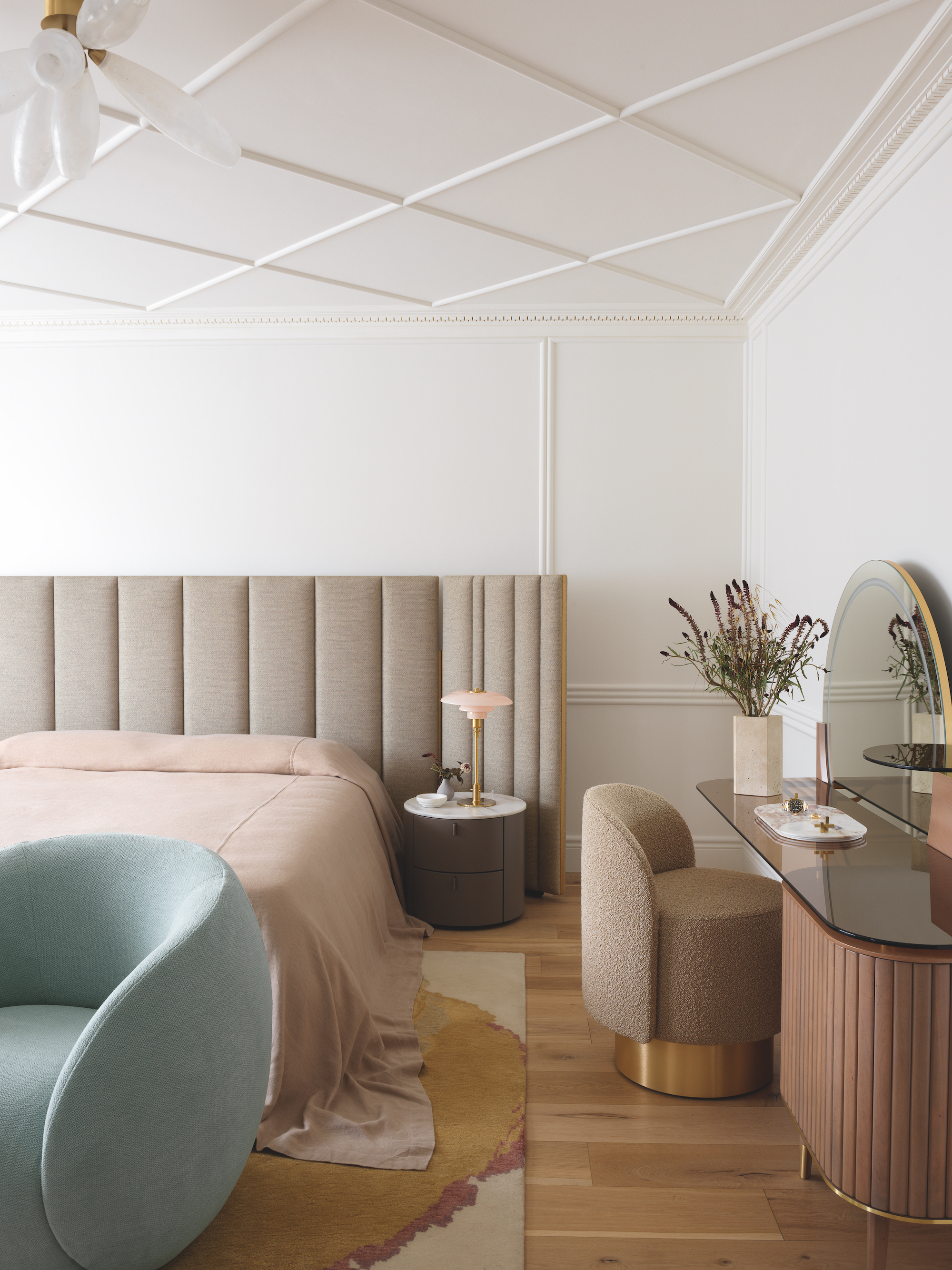
Thought plasterwork was all swirling embellishments and delicate prettiness? Well, welcome to a new era, as beautifully demonstrated in an 1880s-style townhouse in west London by Greg Natale, its ceiling adorned with a custom diamond design from WRP Timber Mouldings.
"The plasterwork is pared-back and refined, its application across the entire ceiling giving it a sense of presence and impact, so it’s a standout feature. The diamond pattern feels like it’s from both worlds — ornate and classic, yet structured and clean," says Greg.
"It strikes the perfect balance between decorative and modern, and the pattern feels timeless," he adds. "Experimenting with cornices and plaster details is the cherry on top of a well-designed space — it adds that final layer of creativity and interest that can make a room feel complete."
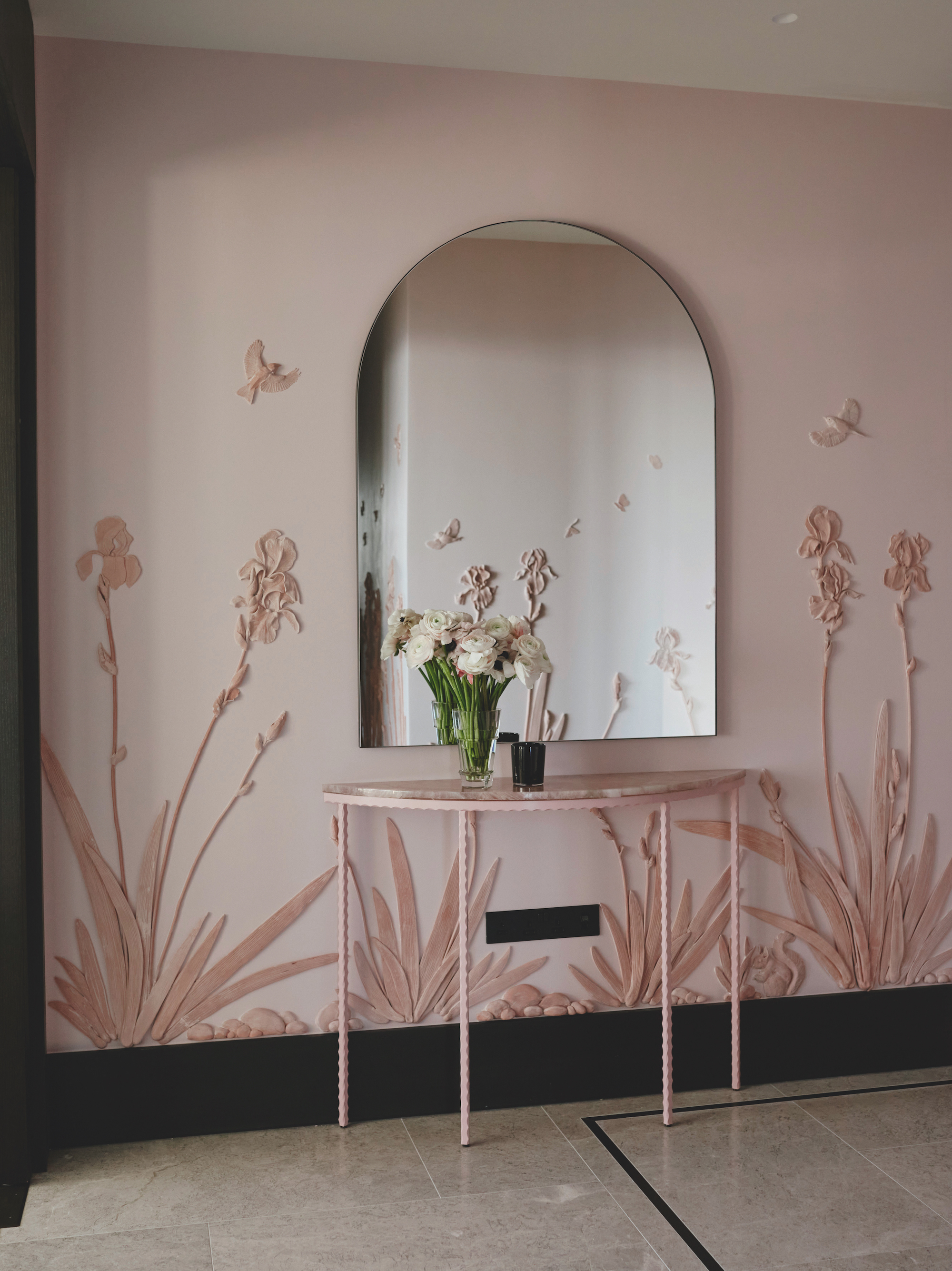
As part of its ongoing creative evolution, decorative plasterwork has migrated from the ceiling and can now be found on surfaces all around the home.
In a contemporary apartment in central London, David Collins Studio worked with ceramicist and sculptor Lucy Smith to create an installation cast in modern-take-on-plaster Jesmonite, with practically true-to-life flora and fauna extending along the walls of a modern hallway.
"Bringing a plaster relief onto the walls is an unexpected twist that sets the tone for the rest of the apartment. It feels immersive — almost like you’ve stepped into a hand-painted fresco," says Siobhan Kelly. "Plaster doesn’t have to be old-fashioned. Playing with scale, placement, and color can make it feel fresh and modern."
Plasterwork is transformative, for sure, but it's not for the faint of heart to install. "As a competent DIYer, and someone who installed plaster cornicing in my bedroom myself, I can honestly say this was one of the hardest jobs I've ever done. The material is unforgiving, and the miters are brain-scrambling," says Hugh Metcalf, Livingetc's editor. "This isn't your easy weekend project, necessarily."
If you are going to attempt it yourself, remember that surface preparation is key: make sure your measurements are pristine, and check that you’re using the right adhesive. If in any doubt, contact a specialist fabricator and installer.







